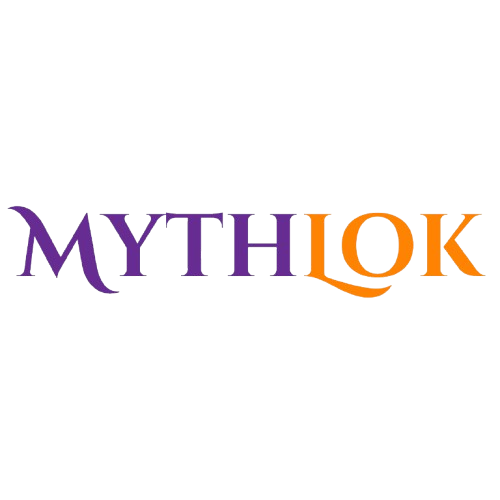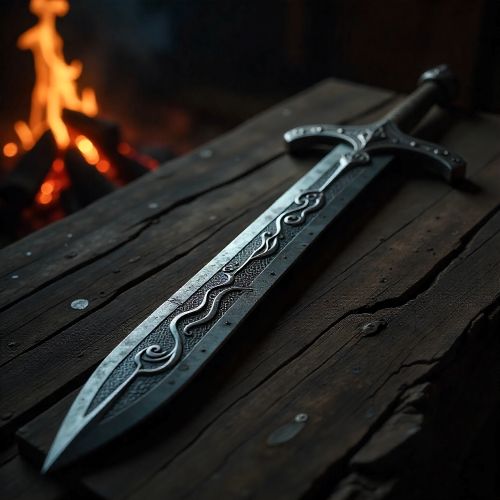The Divine Sword Kusanagi: Japan’s Legendary Blade
In Japanese mythology, few artifacts hold as much significance and intrigue as the divine sword, Kusanagi. Known as one of the three Imperial Regalia of Japan, Kusanagi is not merely a weapon but a symbol imbued with divine power and cultural heritage. This legendary sword has been the subject of countless tales, embodying the spirit of Japanese folklore and the divine right of the Emperor. In this blog, we will delve into the origins, legends, and enduring significance of Kusanagi, unraveling the mystique that surrounds this legendary blade.
The Origins of Kusanagi
Kusanagi, which translates to “Grass-Cutting Sword,” has its origins steeped in ancient Japanese mythology. According to the “Kojiki” (Records of Ancient Matters) and “Nihon Shoki” (Chronicles of Japan), the sword was discovered by the storm god Susanoo in the tail of the eight-headed serpent Yamata no Orochi. The story goes that Susanoo, in a bid to win the heart of the goddess Kushinada-hime, agreed to slay the fearsome beast that terrorized her land. Using his divine strength and cunning, Susanoo vanquished Yamata no Orochi and discovered the sword within its tail.
Initially named “Ame-no-Murakumo-no-Tsurugi” (Sword of the Gathering Clouds of Heaven), the blade was later renamed Kusanagi after an extraordinary event. According to legend, the hero Yamato Takeru used the sword to save himself from a deadly trap set by his enemies. Surrounded by flames in a grassy field, Yamato Takeru used Kusanagi to cut the grass and create a firebreak, thus saving his life. From this heroic deed, the sword earned its enduring name, Kusanagi, and its reputation as a symbol of protection and bravery.
The Symbolism of Kusanagi
Kusanagi is not just a mythical weapon but also one of the three sacred treasures of Japan, known collectively as the Imperial Regalia. Alongside the Yata no Kagami (Eight-Sided Mirror) and the Yasakani no Magatama (Curved Jewel), Kusanagi is a symbol of the Emperor’s divine right to rule. These regalia are integral to the enthronement ceremonies of Japanese emperors, symbolizing their connection to the gods and their rightful place as sovereigns.
The sword itself embodies multiple layers of symbolism. It represents divine authority, given its origin story and its place among the sacred treasures. Kusanagi is also a symbol of courage and wisdom, reflecting the virtues of the heroes and gods associated with it. Furthermore, as a grass-cutting sword, it signifies protection and the power to overcome obstacles, drawing from the legendary exploits of Yamato Takeru.
Kusanagi in Japanese Culture and Literature
The legends of Kusanagi have permeated Japanese culture and literature, inspiring countless retellings and adaptations. In the “Kojiki” and “Nihon Shoki,” the sword’s adventures are chronicled alongside the deeds of gods and heroes, embedding it deeply in the cultural consciousness. These texts, among the oldest historical records of Japan, serve as primary sources for the myths surrounding Kusanagi.
In literature, the sword appears in various forms, often as a symbol of ultimate power or as a pivotal element in heroic quests. The tale of Yamato Takeru, who wielded Kusanagi to perform great feats and secure his legacy, is a favorite subject in Japanese storytelling. Over the centuries, Kusanagi has also found its way into modern media, including novels, manga, and anime, where it continues to capture the imagination of audiences with its legendary status and mythical aura.
The Current Status of Kusanagi
The actual existence of Kusanagi is shrouded in mystery, much like the sword itself. According to tradition, the sword is housed at the Atsuta Shrine in Nagoya, one of Japan’s most revered Shinto shrines. The Atsuta Shrine has been a center of worship and pilgrimage for centuries, with Kusanagi enshrined as a sacred artifact.
However, the sword has rarely been seen by anyone outside the Imperial family and the Shinto priests tasked with its care. Its current condition and even its exact nature remain subjects of speculation and debate. Despite this, the legend of Kusanagi endures, its mythical presence continuing to inspire reverence and fascination.
The Enduring Legacy of Kusanagi
The legacy of Kusanagi transcends its physical form, residing instead in the collective consciousness of Japan and its cultural heritage. As one of the three Imperial Regalia, it symbolizes the enduring link between Japan’s mythic past and its present. The stories of Susanoo and Yamato Takeru, intertwined with the fate of Kusanagi, continue to be told and retold, preserving the sword’s significance for future generations.
In contemporary Japan, Kusanagi remains a powerful cultural icon. It is a symbol of the nation’s identity, embodying values such as bravery, wisdom, and divine right. The sword’s presence in modern media, from literature to video games, attests to its lasting appeal and its ability to adapt to new cultural contexts while retaining its mythic essence.
The Divine Sword Kusanagi stands as a testament to the rich mythological and cultural heritage of Japan. From its legendary discovery in the tail of Yamata no Orochi to its status as one of the Imperial Regalia, Kusanagi is more than just a sword; it is a symbol of divine authority, heroism, and the enduring spirit of the Japanese people. Its stories, woven into the fabric of Japanese mythology, continue to captivate and inspire, ensuring that the legend of Kusanagi remains a vital part of Japan’s cultural narrative for generations to come.
Whether as a sacred artifact enshrined at Atsuta Shrine or as a mythical blade in the annals of Japanese folklore, Kusanagi’s legacy endures, a shining example of the power of myth to transcend time and space, connecting the past with the present in a seamless tapestry of story and tradition.
No posts were found.





